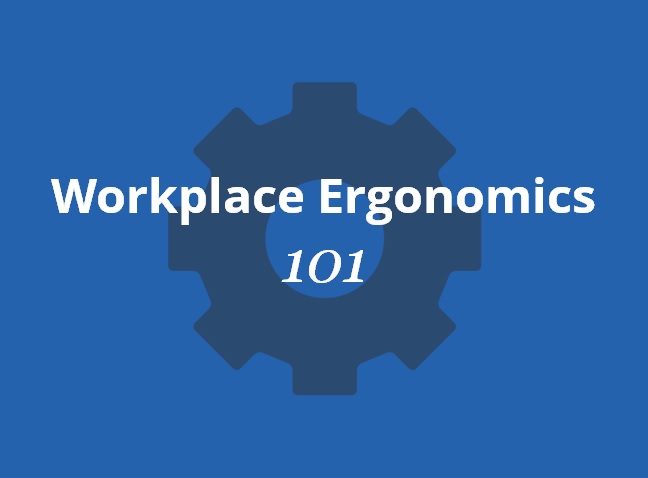Making ergonomic improvements in the workplace requires prioritizing actions.
Decisions must be made regarding which jobs and processes to invest in and redesign.
These decisions need to be based on business priorities. If you don’t have a way to prioritize, precious time and resources may be wasted.
Determine Severity of MSD Risk
One way to prioritize jobs is to determine the severity of MSD risk. The ergonomic assessment will allow you to compare ergonomic action or design limits against the actual job task requirements. For example, the NIOSH Lifting Index (LI) is a method of determining severity of risk. The Lifting Index is calculated to provide a relative estimate of the level of physical stress and MSD risk associated with the manual lifting tasks evaluated by comparing the recommended weight limit (RWL) for lifting tasks with the actual weight lifted to perform the job in the current state. The higher the LI, the greater the MSD risk from the lifting task.
ICE Prioritization Tool
Taking it a step further, a very helpful tool that we’ve used effectively for setting ergonomic improvement priorities is the “ICE” prioritization tool. ICE is an acronym for the three factors that should be considered when setting priorities to direct the efforts of the ergonomics improvement team:
Impact – Can be measured in things like injury cost savings, increased productivity, enhanced quality, really any benefit derived from the proposed ergonomic improvement. What is the impact?
Cost – Cost must also be considered because it is a critical component of any operation. With limited funds, companies must choose wisely among various alternatives. Even the greatest idea might not be pursued if the cost is too high. What is the cost?
Effort – Should be considered in terms of resources available and time required. How difficult and time consuming will this be?
The ICE tool uses weighted values for each of these three factors to help establish priorities in an objective, straightforward manner. The higher the total of these values, the higher the priority.
ICE | Impact | Cost | Effort | TOTAL |
High | 2 | 0 | 0 | |
Low | 0 | 1 | 1 |
The tool uses a matrix format (see chart above) with impact, cost and effort appearing as column headings. Each of these factors must be evaluated and classified as either high or low. As you can see, if the impact is high, the numerical value is 2; if it is low, the numerical value is 0. In the next column, if the cost is high, the numerical value is 0; if it is low, the numerical value is 1. In the third column, if the effort required is high, the numerical value is 0; if it is low, the numerical value is 1. The rationale for valuing high impact greater than low cost and low effort is that an opportunity’s perceived impact typically drives business decisions more than the other factors.
Adding the numerical values associated with each of the three decision factors can yield five different scores, which appear in the “total” box.
The highest possible score is 4, as shown here:
ICE | Impact | Cost | Effort | TOTAL |
High | 2 | 0 | 0 | 4 |
Low | 0 | 1 | 1 |
A score of 4 is classified as an extraordinary opportunity. It is considered extraordinary because it can generate a high impact with low cost and low effort. Such opportunities do not appear often, so they should be acted upon immediately.
The second highest score is 3, shown here:
ICE | Impact | Cost | Effort | TOTAL |
High | 2 | 0 | 0 | 3 |
Low | 0 | 1 | 1 |
An opportunity with an ICE score of 3 represents a strong opportunity that can generate a high impact with either low cost or low effort which should be acted on as soon as possible.
A score of 2 is shown here:
ICE | Impact | Cost | Effort | TOTAL |
High | 2 | 0 | 0 | 2 |
Low | 0 | 1 | 1 |
The mid-level priority score of 2 is an opportunity that provides either a high impact with a high cost and effort, or a low impact that can be achieved at low cost and effort. The chart above shows the scoring for a low impact opportunity with low cost and effort.
Any opportunities that score a 1 or 0 on the ICE prioritization tool likely should not be pursued in the near term. In fact, anything scoring 0 may never be pursued. However, the list of ergonomic opportunities with priorities should be kept in the event that technology, cost, business strategy or something else important to the organization changes in the future.
The ICE prioritization tool is useful for sorting through the ergonomic opportunities that have been identified and need to be accomplished, but compete for the same resources or a limited pool of resources. I would encourage you to consider adding ICE prioritization to your ergonomic improvement process.
Ergonomic Improvement Process Flowchart
For more information on an ergonomics process that works, grab a free copy of our ergonomic improvement process flowchart.
